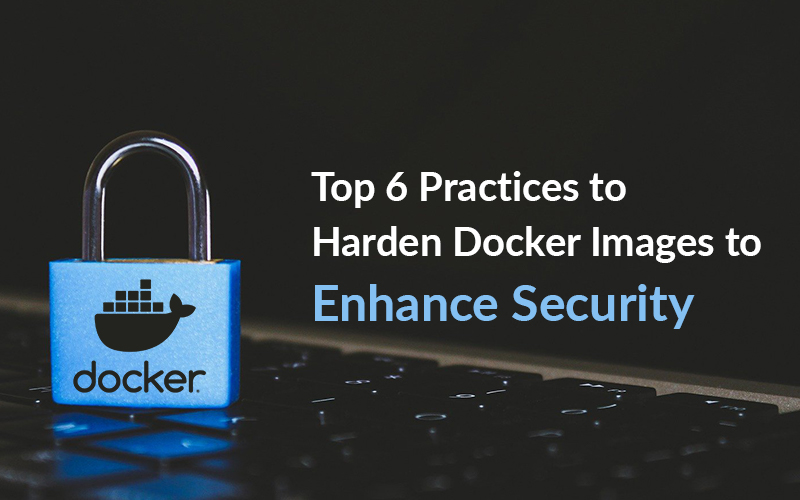Top 6 Practices to Harden Docker Images to Enhance Security
Dockers can be considered equivalent to containers. Different verses of tools and platforms of containers are being used to develop containers to work more profitably. However, there are so many principles for protecting applications based on the container by collaborating with other secured applications.
We have described top 6 practices for Docker security into the most widespread Docker consulting that will be beneficial to build secure containers. If we see the infrastructure of traditional applications, we will find that the apps were hosted on bare or virtual machines.
On the other hand, containers are being used in Dockers that undermine the presumptions of clarity in the application. Due to this, many users face obstacles during the migration of Dockers and compare the usage of containers.
The user may have disorderly containers and servers, blind spots, or a much unprotected environment if you do not have an absolute arrangement and regular sustenance. If you’re also looking to work on Docker, you can take trusted docker consulting from 9series.
Through this article, we are going to discuss the most convenient practices for the security of Docker:
1. Confinement of network post convenience
Network ports are the most secure way to protect containers. The developers need to access the extra network ports to avoid hurdles at the development of the new container. After the image is entered into a composition or open internet atmosphere, it removes all the additional network ports.
While using Docker command-line interface (CLI), try to use the p parameters so that you can set limitations on host-to-container port mappings.
2. Apply Insignificant base images
The images in Docker are usually built on the top of “base images” to avoid the configuration of the image from scratching because it can cause a principal security issue. The component base images can also be used that are completely useless for your purposes.
Although, the additional component that you are using can expand the attack surface of your image. So it is necessary to select the base images carefully that can complement your target. If possible, you can also build a depreciated base image of your own.
3. Use of Docker Compose
This is the final way to harden your containers of Docker that you can combine all the files into Docker compose files. We can make them a public endpoint or public user access for the front end only when separating your network in the docker-compose method.
With this, your database will be limited only to container-to-container communication than the specific links. This method will increase the security of Dockers to the next level because there will be no public use that can connect to databases.
This method can be considered the most robust method of network segmentation for the architecture of the application. In this, all you need to divide the public-facing is the depletion of a flat network of containers.
There is no need to expose the database to the public internet. All they need is the minimal link of the narrow network so that you can communicate to the web series. As a result, when the database has been restricted, the chances of security issues decrease.
4. Secure the Host
The host is more protected than the Docker environment means if the host is compromised, then the containers are also at risk. So if you want to secure your containers, then first harden the host of containers, including an operating system, kernel versions, and system software. You can also do continuous patching and auditing for the hardening of the host.
5. Use Multi-Stage Builds
If you want your containers in an organized manner, then nothing can be better than a multi-stage build that provides operational and advantages of security. In this method, you can develop an intermediate container with all the necessary tools to generate the final artifact.
So lastly, only the final artifact will be copied in the final image without building temporary files or any developmental dependencies. Although it will only build the minimal binary files and the dependencies required for the final image without any intermediate files.
6. Use metadata labels for images
Labeling containers is the most basic practice that refers to the objects. The users can apply labels for additional information about the container. You can also characterize the containers by using tags, and this is what they are used for.
Conclusions
We hope that these fundamental points will help you to maintain a protected atmosphere for the container applications. As a result, The Center for Internet Security has put together a comprehensive benchmark for Docker with security guidelines for the Docker server software.
Now you can enjoy the advantages of Docker containers with the help of docker consulting from 9series without any obstacles in security only by using the outlined practices in the benchmark of CIS.
Recent Posts
Deep Learning Explained: Understanding the Brain Behind AI
The Intersection of AI and IoT: Creating Smarter, Connected Environments
The Evolution of AI: From Simple Algorithms to Neural Networks
The Role of AI in Sustainable Development
Scaling New Heights: Integrating Advanced Technologies in Startup Product Engineering
